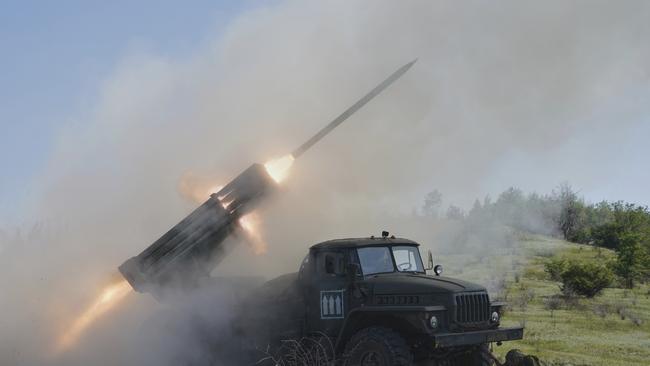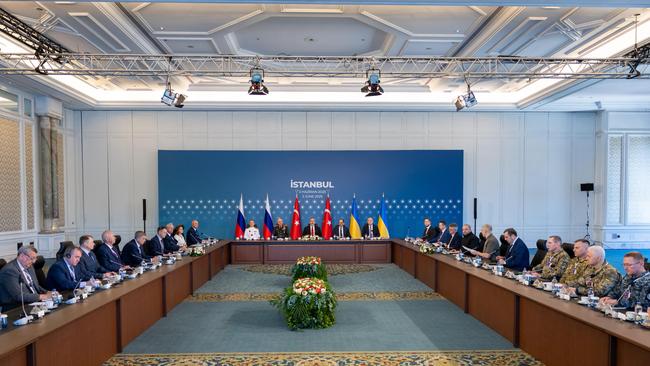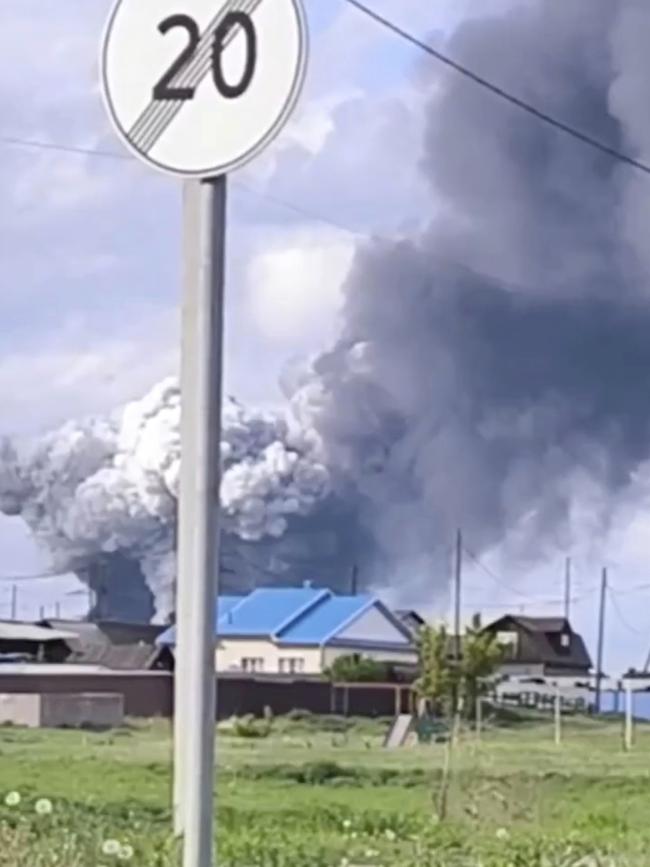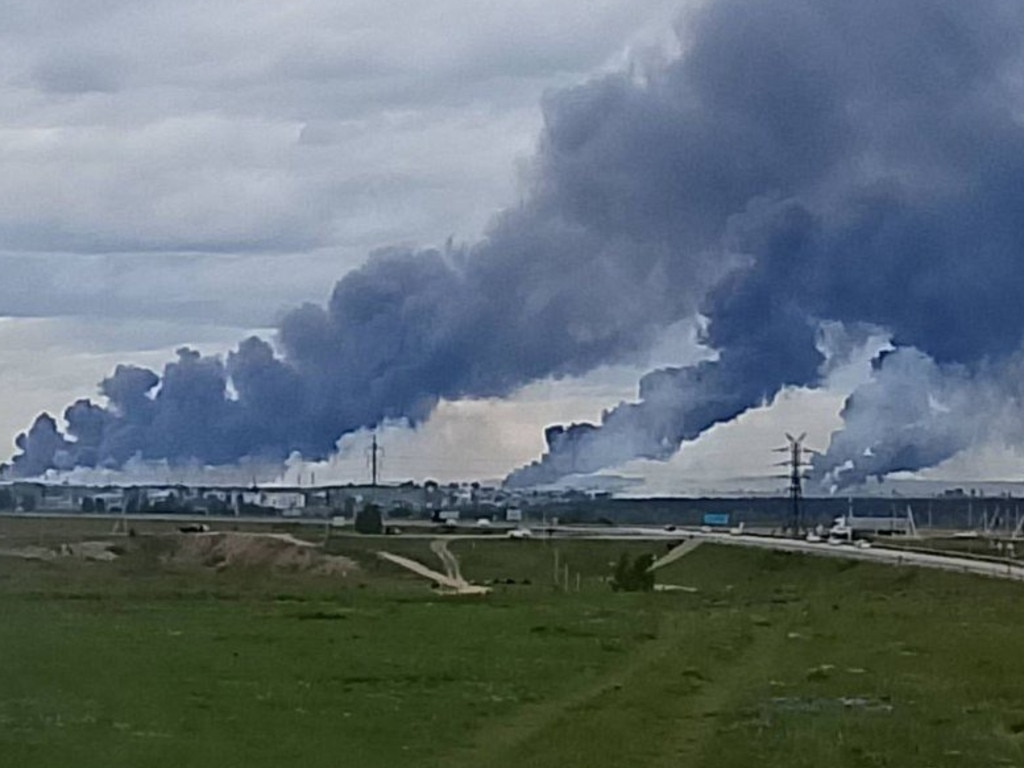Russia and Ukraine ratchet up war while trying to show Trump they want peace
The two sides talked for less than an hour in Istanbul and a halt to the fighting seems out of reach for now.

Ukraine’s weekend attacks against military airfields deep inside Russia signal the long-stalemated war is entering a perilous phase, with both sides seemingly intent on escalation and prospects for a US-brokered peace deal receding.
Only a day after the Ukrainian drones dealt a blow to Russia’s bomber fleet in a brazen attack that stunned Moscow, the two sides met for a second round of talks in Istanbul after President Trump declared again that he wanted a quick deal to halt the fighting.
The meeting lasted barely an hour, producing an agreement to exchange prisoners but nothing more. Instead of cooling off, the grinding 40-month war seems to be growing even hotter — with minimal pushback from Trump.
Russia has struck Ukraine with an avalanche of missiles and drones in recent weeks, hitting a range of civilian targets and killing or wounding many civilians. It is likely to intensify those attacks in response to Kyiv’s drone strikes ahead of a summer offensive now in the planning stages.
Ukraine had relied on the production of strike drones, hoping to offset its disadvantage on the ground and make up for US aid that is expected to diminish in the months ahead with air strikes that produce out-size effects.
Ukraine said its Sunday attack damaged or destroyed more than 40 aircraft, while experts have documented about 14 strikes on Russian bombers — a huge setback for Moscow either way.
On Tuesday, Kyiv followed up that success with an attack on the Kerch Bridge, which connects occupied Crimea with Russia. Ukrainian agents mined the supports of the bridge, according to the SBU, the country’s main security and intelligence agency. The mines detonated early Tuesday morning and Ukrainian officials claim they severely damaged the bridge’s underwater supports.
“The Crimean Bridge is an absolutely legitimate target, especially considering that the enemy used it as a logistic artery to supply its troops,” Vasyl Malyuk, head of the SBU, said on Tuesday.

The Russian Foreign Ministry didn’t immediately respond to a request for comment on the attack. Traffic on the bridge has resumed after being suspended earlier, the Russian Ministry of Transport said. The ministry said the closure didn’t cause any serious difficulties for drivers.
One question is whether the spiralling attacks will spur the administration to engage more deeply in the peace process — or walk away, as US officials have repeatedly threatened to do. Trump last week appeared to give Russian President Vladimir Putin a two-week deadline, threatening to “respond a little bit differently” if he concluded the Russian leader was stringing him along.
Trump’s pledge to walk away from the war is unrealistic, some analysts said. “Walking away extends the fighting,” said William Taylor, the former US ambassador to Ukraine during the George W. Bush and first Trump administrations. “It would be an admission of failure.”
Putin still appears to be calculating that Trump has no appetite for siding more closely with Ukrainian President Volodymyr Zelensky and would rather disengage from the conflict than impose long-threatened additional sanctions on Moscow’s oil experts or revive large-scale US arms shipments to Ukraine.
Zelensky is in a tighter spot given his sometimes tense relationship with Trump, which resulted in a brief cut-off of US intelligence and military support after a disastrous Oval Office meeting in February. He has sought to show the White House he is ready for a truce even while rebuffing Putin’s draconian demands.

“It was the Russians who chose to continue the war, even under conditions where the entire world is calling for an end to the killing,” Zelensky said in a Sunday address to the nation. “And pressure is truly needed, pressure on Russia that should bring it back to reality.”
If the Trump administration has a strategy beyond appealing to Putin to halt the fighting in return for territorial concessions and other inducements, it has yet to make one clear. Former President Joe Biden sought to contain the conflict by imposing sanctions on Russia and establishing limits on how Ukraine could use some US-provided missiles.
But Trump hasn’t sought to ratchet up the economic and military pressure on Russia. And he has yet to actively involve himself in planning for Ukraine’s defence, including co-ordinating on future weapons needs. He has been unusually silent about Ukraine’s drone strikes on Russian bases.
Zelensky told reporters Monday that Turkish President Recep Tayyip Erdogan has proposed a four-leader summit for later this month featuring himself, Trump, Putin and the Ukrainian leader. But the administration hasn’t said whether Trump would attend such a meeting.
Absent international pressure, the war this summer could even intensify as the Kremlin strives to shift the front lines.
Fighting in eastern Ukraine last month was the most intense this year, according to Deep State, an independent Ukrainian frontline analytics group. Russians have occupied about 170 square kilometres of territory after pushing Ukrainians out of the Russian region of Kursk earlier this year.
The most active fronts include Sumy and Pokrovsk, Zelensky said, adding that Ukraine is using all its strength to prevent Russia’s build-up for a forward thrust.
A continually brutal conflict wasn’t what the Trump administration had in mind. As a candidate, Trump pledged to end the war within a day, a characterisation he now claims was sarcasm.
In March, Secretary of State Marco Rubio and then-national security adviser Mike Waltz met with Ukrainian officials in Saudi Arabia. They secured Kyiv’s agreement to a 30-day ceasefire in the hope that Russia would soon follow suit, setting the stage for talks that would end the war.
But Moscow baulked at agreeing to a truce, demanding that what it terms the “root causes” of the conflict be addressed — shorthand for barring Ukraine from accepting Western assistance and diminishing its sovereignty as an independent state.
In Washington, the only pressure appears to be coming from Congress. Sens. Lindsey Graham (R., S.C.) and Richard Blumenthal (D., Conn.) plan to introduce legislation next week that would impose steep tariffs on countries that buy Russian energy and uranium. If the measure passes, and Trump doesn’t veto it, the punishment would dovetail with a new sanctions passage the European Union is putting together.
The brief talks on Monday produced some progress on humanitarian issues but made no headway toward a truce.
Ukraine said a memorandum on peace terms promised by the Russian side in the aftermath of a May 16 meeting was only shared with the Ukrainians once both delegations sat down Monday in Istanbul.
In any event, the Kremlin proposal reported by Russian state-run media differed little from the maximalist demands Moscow has been advancing for months: that four disputed Ukrainian territories be officially recognised as part of Russia; that Ukrainian troops abandon those areas; and that Kyiv abide by a neutrality policy that would keep it from joining the EU or the North Atlantic Treaty Organisation. Also included was a limitation on the size of Ukraine’s armed forces.
It was another sign that Russia is determined to keep pressing the war it started. Ukraine, meanwhile, will continue to take bold steps in its defence.
“If Russia had agreed to a ceasefire,” Ukraine’s Foreign Ministry spokesman Heorhiy Tikhyi told reporters Monday, “I guess the planes would be intact right now.”
Wall Street Journal






To join the conversation, please log in. Don't have an account? Register
Join the conversation, you are commenting as Logout